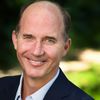Click here to read an original op-ed from the TED speaker who inspired this post and watch the TEDTalk below.
Camille Seaman's opening words in her "Photos From a Storm Chaser" TEDTalk -- "Everything is interconnected"-- resonated with me on many levels. Because when you look at the planet -- the forests, the oceans, the deserts and the climate -- it is powerful and everything is connected, and it all supports this glorious array of life, and us, at the same time.
But look a bit closer and you also see fairly quickly that deforestation, climate change, illegal fishing and wildlife poaching are slowly and inextricably destroying our home. And if we don't take care, we're going to wake up 50 years from now and the only nature we'll know in this world will be in museums. People will be standing in line to pay money to see what the world used to look like. We must make conscious choices now to save the natural world that sustains us. It starts with connections.
Conservation is ultimately about building connections between people and the nature that supports us and the many forms of life with whom we share this planet. Which is why I've always believed in the power of a good story. Our work requires us to transport people to the places we cherish, and inspire them to help conserve these places before they're lost. Conservation boasts reams of scientific studies, policy statements and white papers -- bedrock tools of our trade -- but it's rare that a scientific description has what Daniel Burnham termed "the power to stir men's blood." Our movement has an unfair advantage -- the power and raw beauty of nature.
We are at our best when we wed undeniable science with the beauty of places like the Northern Great Plains or the Himalayas. It also comes in the legends and stories of the communities whose lives are intertwined with these places. And none of them need embellishment to be inspiring -- they simply need to be told.
Last year I was mesmerized listening to an elder from the Pine Ridge reservation tell the story of the Northern Great Plains, where according to Lakota legend, it was the American bison who coaxed humanity out of the ground and into the sunshine, with the promise that people would be fed and clothed with the flesh and fur of the bison. And that's precisely what happened in large part with the communities in the American West -- people hunted the bison for food, comfort and shelter. And now we are working with the Lakota Sioux and the federal government to create the first-ever tribal national park and restore bison to the southern unit of Badlands National Park. Talk about connected -- humanity giving back to the creature with whom we co-evolved in the most iconic of American landscapes.
We found ourselves nose to nose with a magnificent, gorgeous animal whose habitat is melting out from under him. The absolute wonder and joy on my son's face was priceless. -- Carter Roberts
There is a profound, almost visceral connection between people and animals, and you can see it clearly with kids. One of my most memorable experiences in nature happened with my son, Christian, when I took him on a trip to the Arctic. We were inside our vehicle, surrounded by a foot and a half of fresh snow, and transfixed by a black dot moving closer and closer to us. The black dot turned out to be the nose of an enormous polar bear. He deliberately moved toward us until he was standing on his hind legs. We found ourselves nose to nose with a magnificent, gorgeous animal whose habitat is melting out from under him. The absolute wonder and joy on my son's face was priceless. It's a story he hasn't stopped telling, and one he will probably tell for the rest of his life.
One of my favorite storytellers is someone I've never met -- John Muir, widely considered the father of America's national parks. Muir harnessed the power of words to convince Congress that wild, remote places should be saved as national parks. "Here everything is hospitable and kind, as if planned for your pleasure, ministering to every want of body and soul," he wrote of Yosemite. "The whole wilderness in unity and interrelation is alive and familiar... "
WWF will always bring our smartest science and most innovative technology to bear as we seek to create a future in which nature and humanity flourish together. But we will also need to knit that science and technology into stories that resonate broadly and motivate us and others to act. Stories entertain us, comfort us, captivate and transport us. They make the unknowable accessible and the unreal seem possible. And through the burgeoning power of social media, our stories can be shared around the world.
As Muir wrote, "One day's exposure to the mountains is better than a cartload of books." So get out there -- revel in this glorious world we share. And when you come back, be sure to tell others all about it. Because if we share the stories of our experiences in nature, we can start a conversation about the power and value of nature in our lives, and help illuminate the manifold ways we can work together to save not only what we cherish but also what we need to survive.
Ideas are not set in stone. When exposed to thoughtful people, they morph and adapt into their most potent form. TEDWeekends will highlight some of today's most intriguing ideas and allow them to develop in real time through your voice! Tweet #TEDWeekends to share your perspective or email tedweekends@huffingtonpost.com to learn about future weekend's ideas to contribute as a writer.
